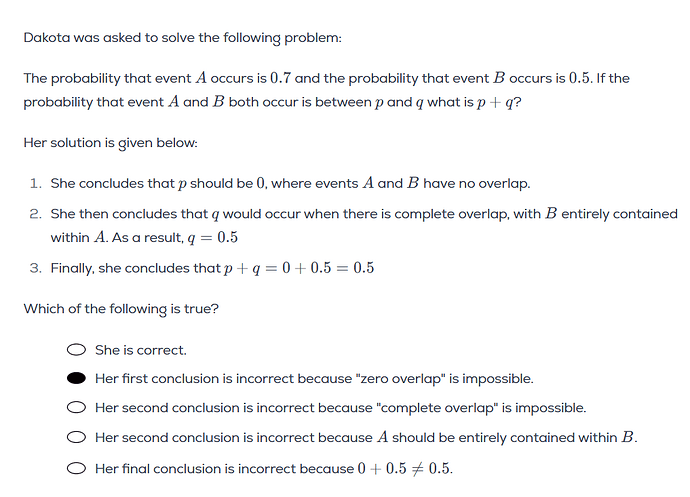Hi! Can someone please help me with this question. I think I have some gaps in my understanding of this concept.
Here is my reasoning + questions:
- We have to find the two extremes for this problem.
- The first extreme is complete overlap, therefore p or q = 0.5
- The second extreme is mutually exclusive. However, these two events are not mutually exclusive because their probabilities add up to 1.2, which is greater than 1. This is based on the inclusion-exclusion principle.
- Therefore, we must find the second extreme and we use the inclusion-exclusion principle for that (I think?). However, I am confused why we set the total probability to 1. I know that the total probability cannot be greater than 1. But why cannot it not be less than 1?
Also, how would this question change if the problem asked for the probability of A or B occuring?
My reasoning would be:
- The probability of complete overlap would be calculated in the same way since we don’t know if the two events are mutually exclusive or independent.
Thank you!!
